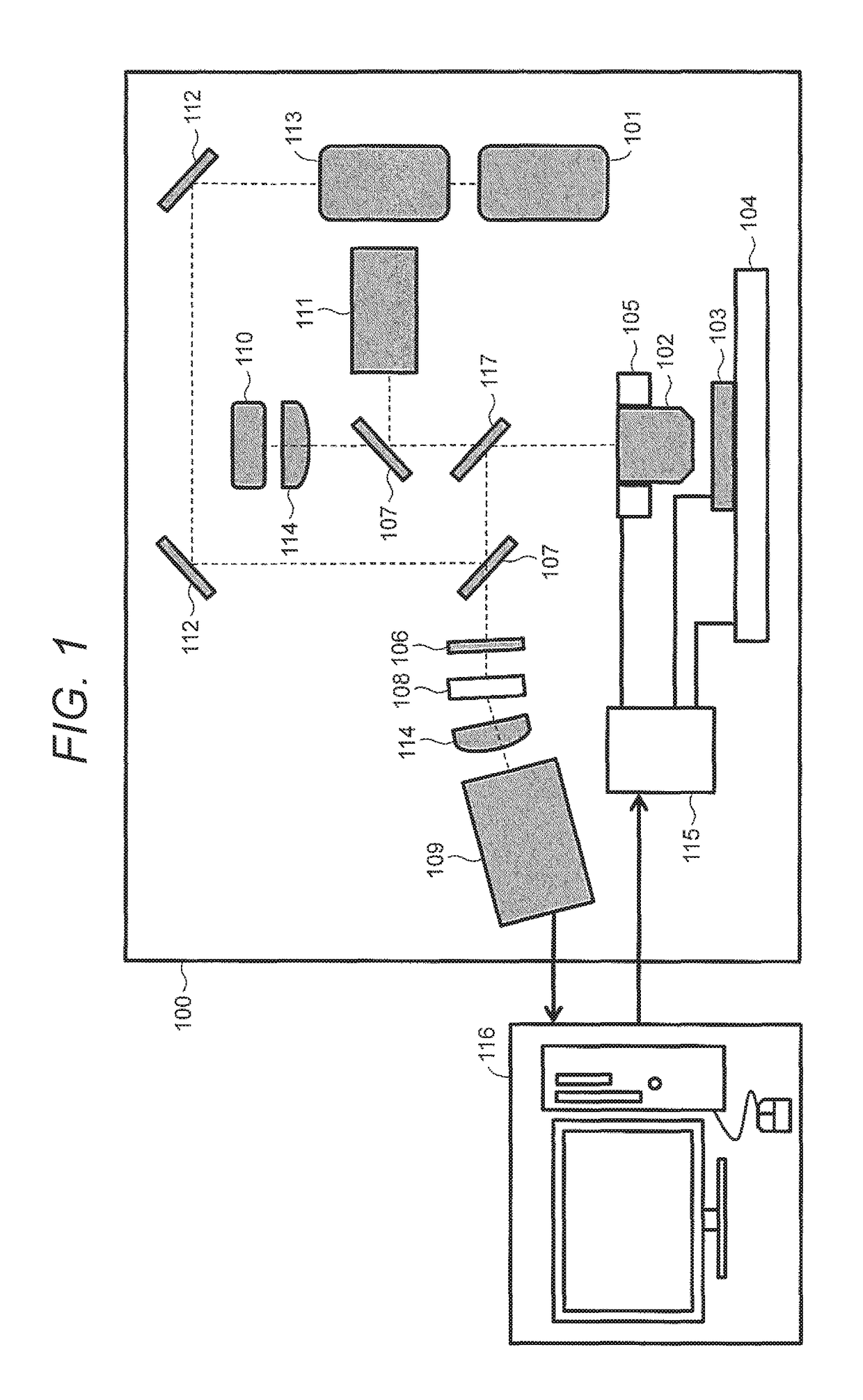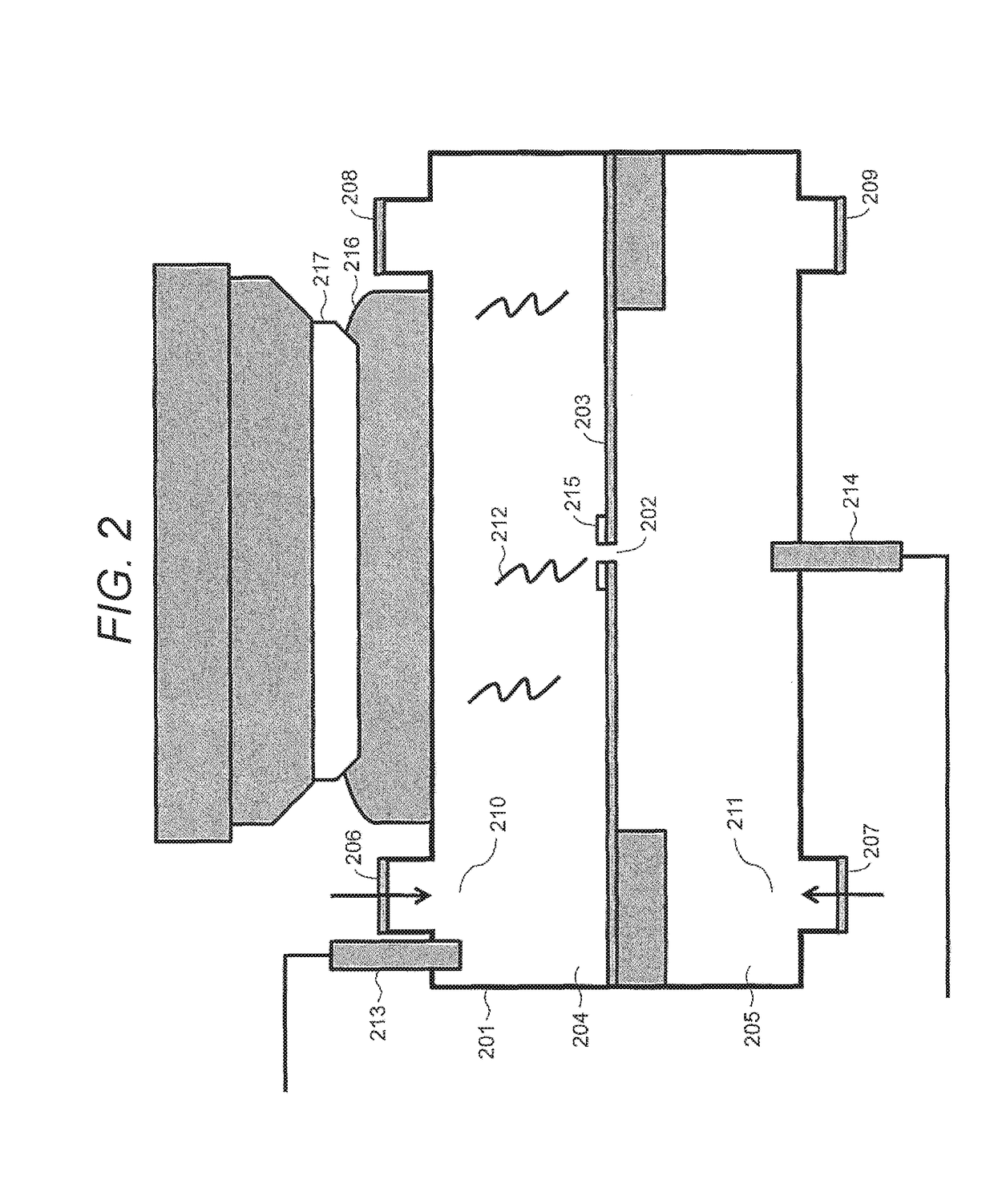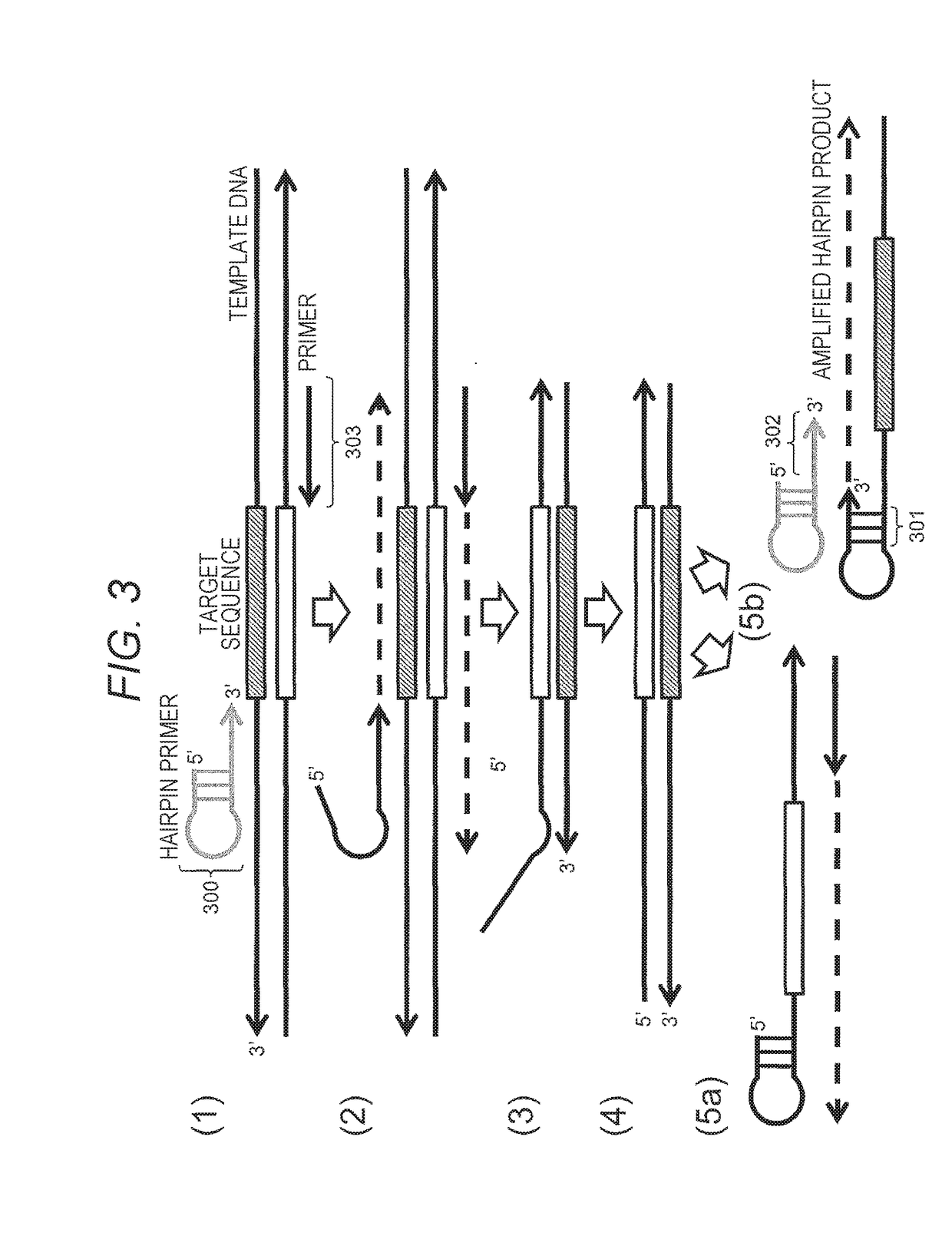Method for Constructing Nucleic Acid Molecule
a nucleic acid molecule and nucleic acid technology, applied in the field of nucleic acid sequencing, can solve the problems of difficult differentiation between the two, and achieve the effects of high degree of determination precision, high precision, and high analysis accuracy
- Summary
- Abstract
- Description
- Claims
- Application Information
AI Technical Summary
Benefits of technology
Problems solved by technology
Method used
Image
Examples
example 1
[0064]FIG. 3 illustrates an embodiment of the method of the present invention. The method for constructing a nucleic acid molecule of the present invention has a feature that a target sequence of nucleic acid as a target is amplified and the target sequence is repeated to construct a single strand (single molecule).
[0065]As illustrated in FIG. 3 (1), at least one of a pair of primers to be prepared is designated as a primer 300 having a hairpin structure. The 3′ terminal of the primer 300 has a primer sequence structure of the single-stranded region having a sequence complementary to the template DNA sequence including the target sequence and is configured to protrude from the stem part. In this case, the primer 300 for amplification of the target sequence is a hairpin primer, and the primer 303 for amplification of the complementary strand of the target sequence may be a hairpin primer or a primer having no hairpin structure. Alternatively, a primer 303 can be used for amplificatio...
example 2
[0093]In Example 1, the nucleic acid molecule constructed in the case of using the hairpin primer at only one side is constructed such that the molecule illustrated in (4) of FIG. 3 and the molecule illustrated in (5b) of FIG. 3 are constructed in approximately equal proportions. In this Example, a method will be described by which the molecule illustrated in (5b) of FIG. 3 in which the target sequence can be detected twice is not constructed in approximately equal proportion but the total molecule to be constructed is constructed to become a molecule in which the target sequence can be detected twice. FIG. 4 illustrates procedures thereof.
[0094]In this Example, a step similar to FIG. 3 is performed before the step illustrated in FIG. 4. The step similar to FIG. 3 is different from the step of FIG. 3 in that the primer 303 in a pair with the hairpin primer 300 is biotinylated and then the amplification step illustrated in FIG. 3 is performed. With the biotinylation of the primer, in...
example 3
[0104]In this Example, an example of a method for constructing a molecule in which the total molecule includes the target sequence information twice will be described by using λ exonuclease. FIG. 5 illustrates procedures thereof.
[0105]This embodiment has a feature in that the 5′ terminal of the hairpin primer is phosphorylated before use and the 5′ terminal decomposes the phosphorylated DNA strand after constructing a target nucleic acid molecule. For decomposing, although there is no particular limitation, for example, λ exonuclease is used.
[0106]A step similar to FIG. 3 is performed before the step illustrated in FIG. 5. The step similar to FIG. 3 is different from the step of FIG. 3 in that the 5′ terminal of the hairpin primer 300 is phosphorylated and then the amplification step illustrated in FIG. 3 is performed without the primer 303 in a pair being phosphorylated. After the reaction, if necessary, the salt and the primer in the amplification reaction solution are removed. Th...
PUM
| Property | Measurement | Unit |
|---|---|---|
| Speed | aaaaa | aaaaa |
Abstract
Description
Claims
Application Information
 Login to View More
Login to View More - R&D
- Intellectual Property
- Life Sciences
- Materials
- Tech Scout
- Unparalleled Data Quality
- Higher Quality Content
- 60% Fewer Hallucinations
Browse by: Latest US Patents, China's latest patents, Technical Efficacy Thesaurus, Application Domain, Technology Topic, Popular Technical Reports.
© 2025 PatSnap. All rights reserved.Legal|Privacy policy|Modern Slavery Act Transparency Statement|Sitemap|About US| Contact US: help@patsnap.com



